Homemade Basil Pesto
As an Amazon Associate, I earn from qualifying purchases. Read the full disclosure here.
This delicious and flavorful homemade pesto recipe uses just five simple ingredients and makes the perfect pasta or sandwich topping. Use in pesto pull-apart bread, on spaghetti salad or homemade baked ziti, or as a spread for my favorite yeast rolls recipe or caprese focaccia.

“WOULD YOU SAY YOUR PESTO IS THE BEST-O?” — YOU WILL LOVE THIS HOMEMADE PESTO RECIPE
“No, but I’d say it’s pretty good-o.”
If you get that reference, we’re already off to a great start, and you might enjoy my Instagram series. If not, we can still be internet friends. I guess.
ANYWAY. Make no mistake: I am by no means a gardener. I’ve never been one, probably never will be, and, admittedly, get a lot of my summer produce from my siblings-in-law, neighbors, and gym members whose gardens are overflowing with zucchini, peppers, tomatoes, and herbs.
Pesto is, of course, easy to buy, but believe it or not, it’s even easier to make. What I love most about making it myself is that I can leave out the cheese if my husband wants some (he’s dairy-free!), change up the nuts based on what I need to use up in my ingredient pantry, and switch entirely away from nuts if there’s an allergy in our guest list (we’ll get to that).
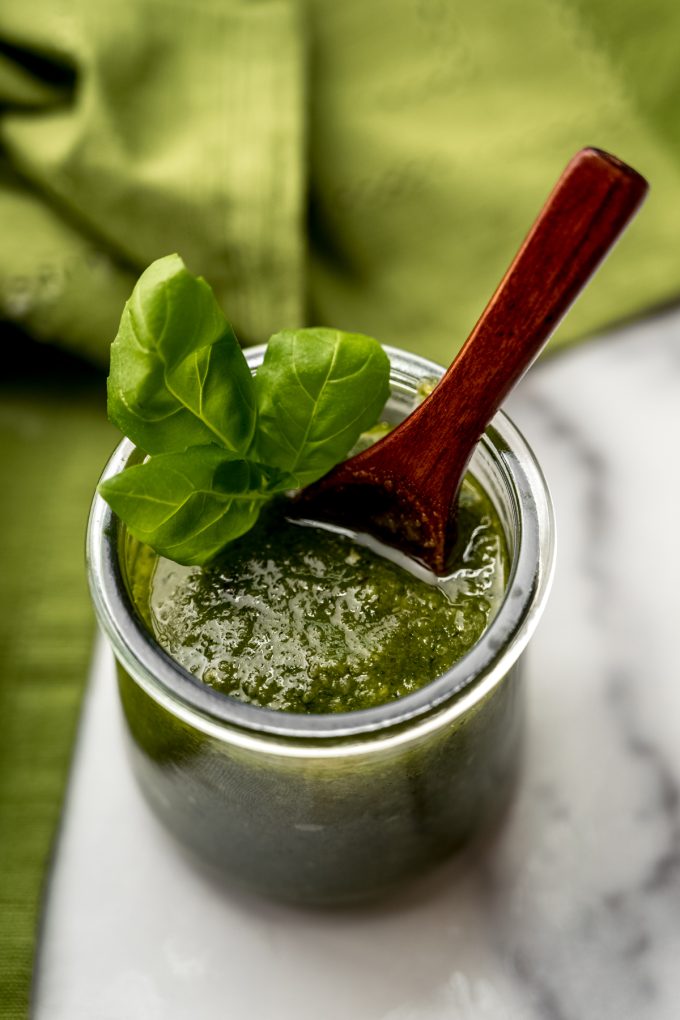
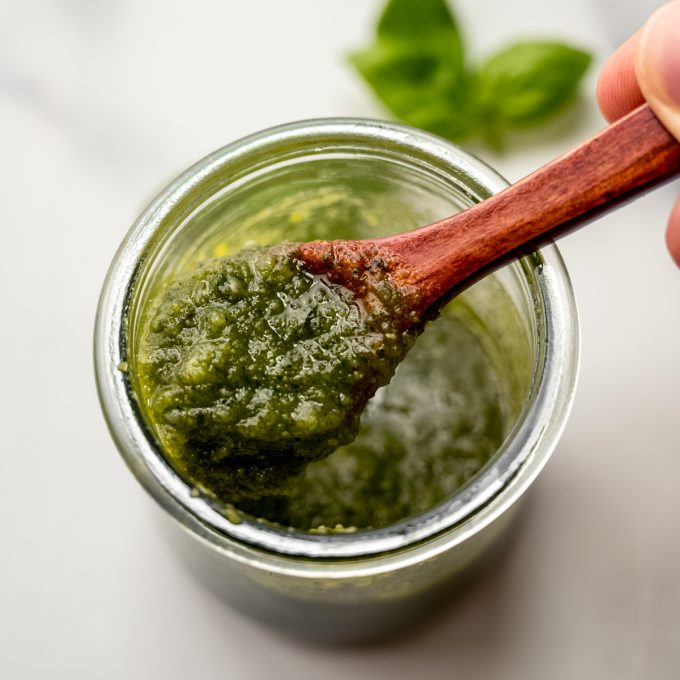
What is Pesto?
Pesto is a sauce or condiment traditionally made from fresh basil leaves, crushed garlic, pine nuts, salt, olive oil, and a hard cheese like Parmesan or Pecorino. It is blended into a smooth texture and used as a dip, spread, topping, or sauce.
But this is not a limiting list of ingredients OR uses! These are just more reasons to love homemade pesto. So let’s get to to the good stuff.
Homemade Pesto ingredients
FIVE. Just five ingredients is all you need to make this fresh pesto recipe. If you want to count salt, then it’s six.
Pesto is obviously made from lots of basil, but what gives it its texture, density, spreadability, and body is lots and lots of fat. Traditionally, pine nuts are used for the nut base, but you can also use walnuts. I have used both with no preference for one over the other. I just use whatever I have on hand, which is more often than not walnuts over pine nuts.
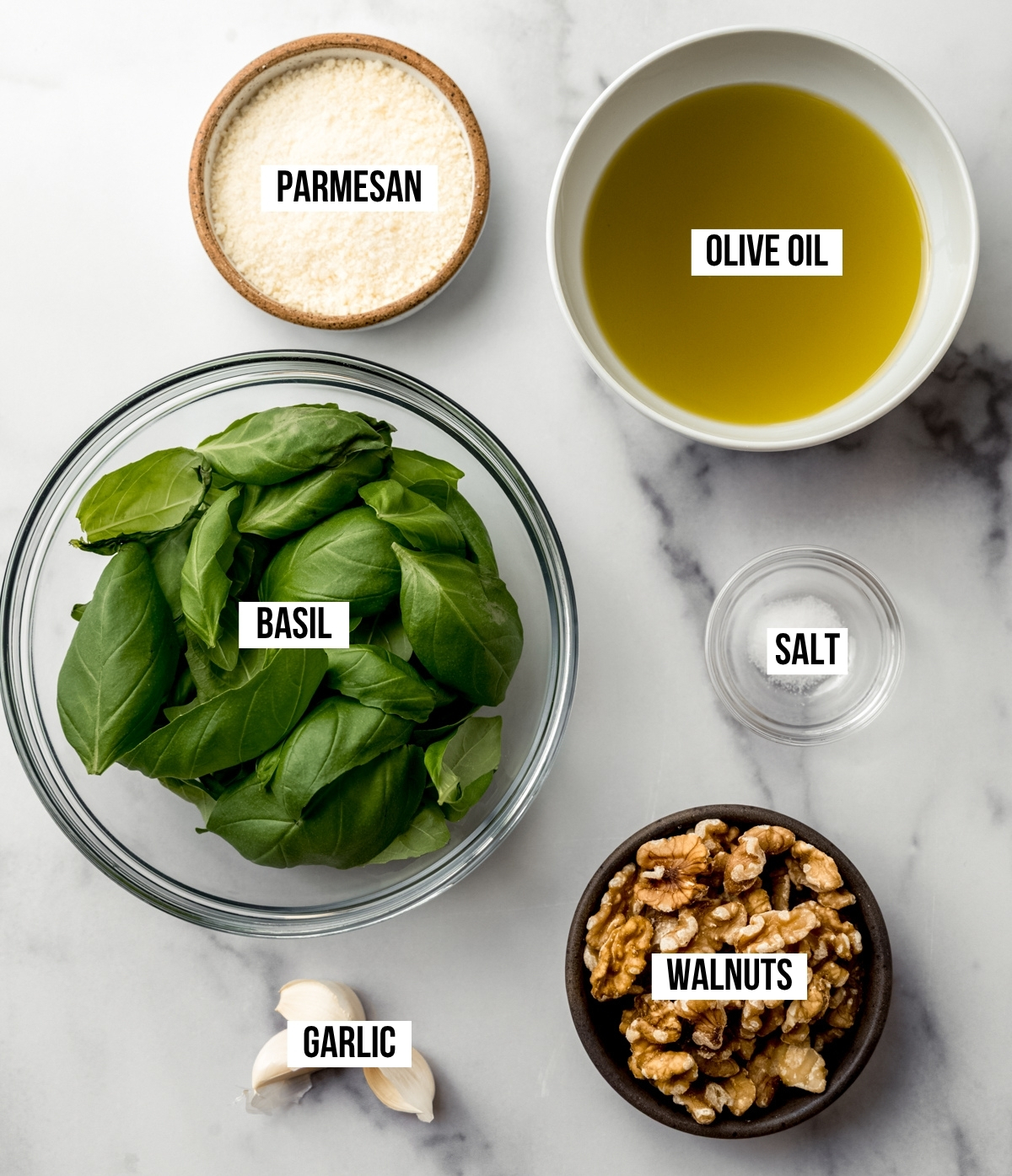
That said, in addition to the basil, salt, and pine nuts or walnuts, you’ll need olive oil, fresh garlic, and Parmesan cheese.
I prefer to use grated Parm, but you can use shredded if you like. So much wiggle room!
Pesto Recipe with Pine Nuts: Variations for allergies
If you’ve got a nut allergy, sunflower seeds are a good alternative (thanks for the tip from reader Ashley!). The taste isn’t really important– it’s more about what the oily nuts bring to the pesto. Lots and lots of texture and OOMPH.
Olive oil + garlic are next in line as flavor makers behind the basil. They bring depth and zest to the spread.
What I really love about pesto is that it’s got a little zing but not in a spicy way. It’s just chock full of herby flavor which comes across as a little zing on the tongue and in the back of the throat.
It’s pesto’s signature move and it is heavenly.
The Parmesan cheese smooths things out and brings another level of tang to the pesto. Zest, zing, and tang… How can you not love pesto?!
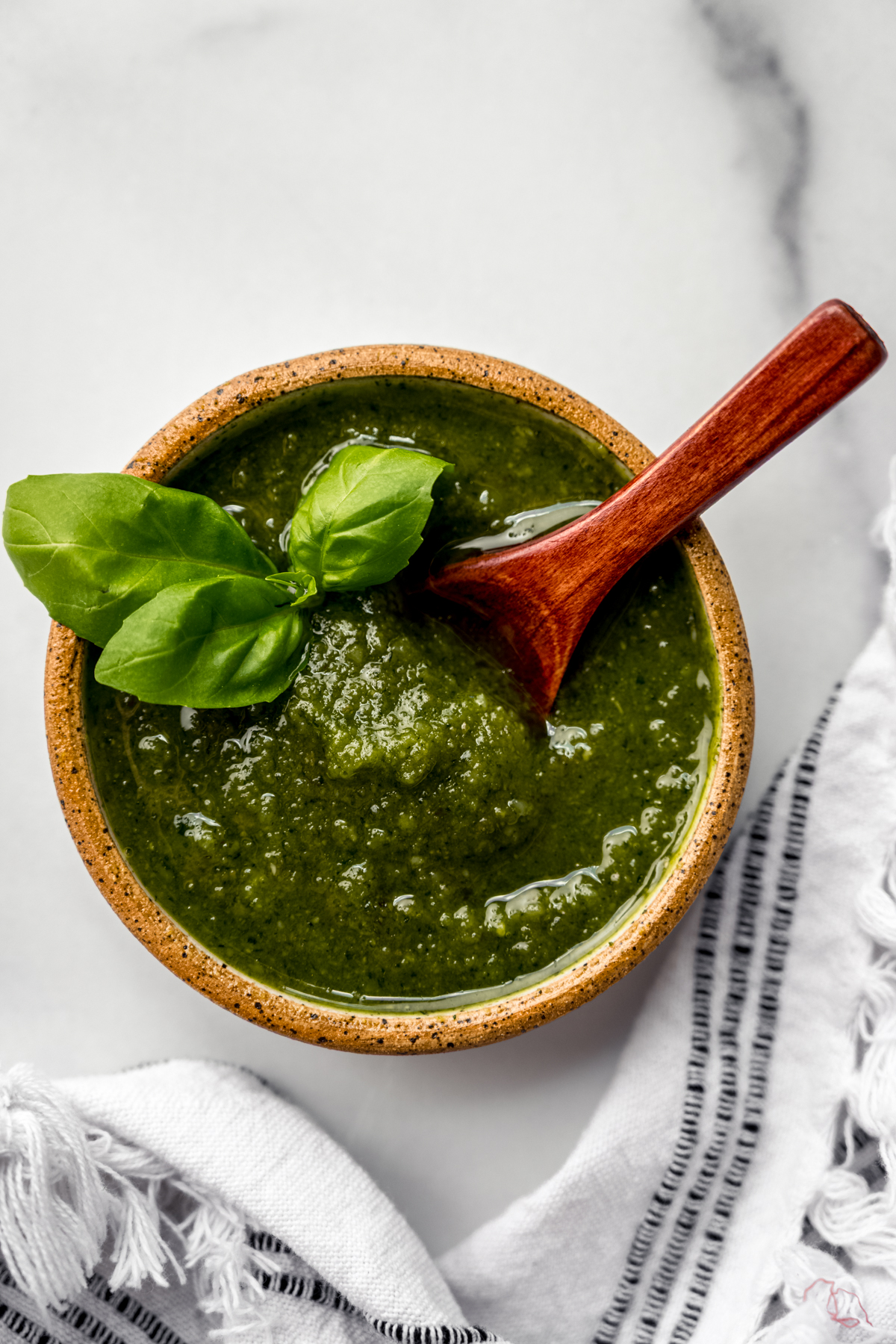
How to make Basil Pesto Sauce
You’ll need a strong food processor to make fresh pesto, and this is the one I have and love. In theory, you can also use a blender, just make sure it’s a very strong one (like a Bullet).
STEP #1: in the bowl of a food processor, combine the basil leaves, pine nuts or walnuts, and garlic. Process until everything is combined (it will still be chunky), then stop the processor, remove the lid, and scrape down the sides of the bowl.
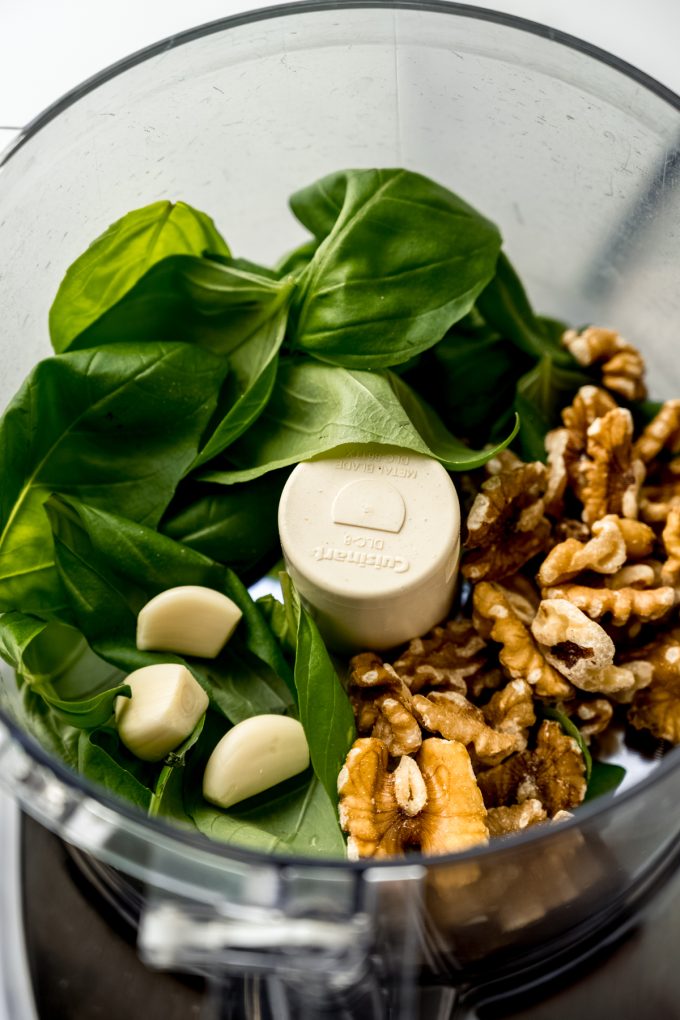
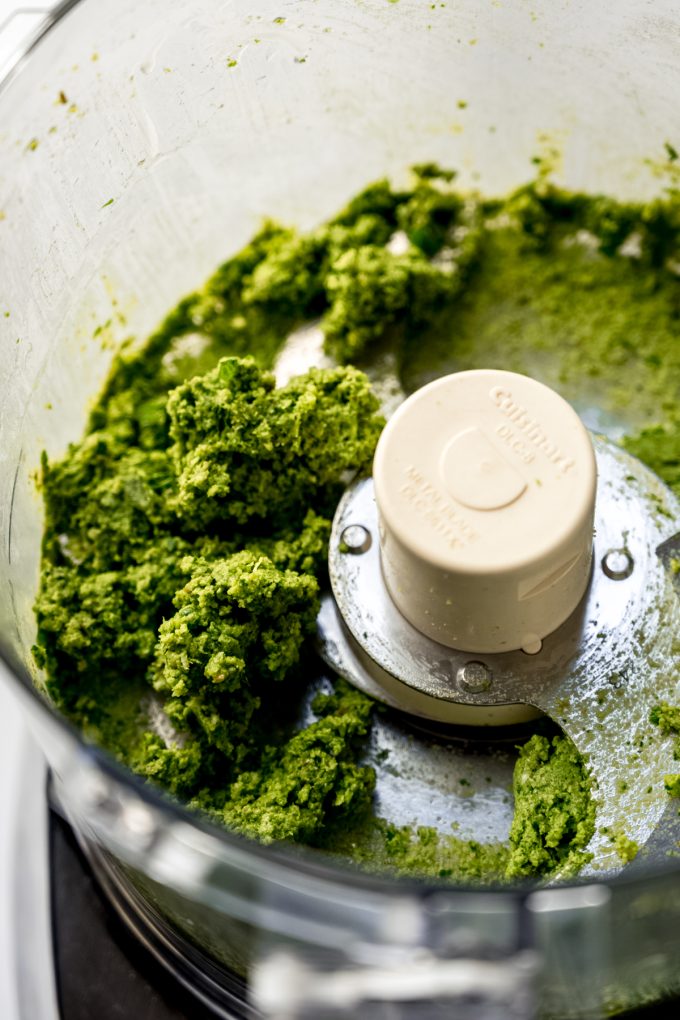
STEP #2: replace the lid and remove the processor’s plug in order to pour the olive oil directly into the mixture. Slowly drizzle in the olive oil and continue to process the mixture until all of the oil is incorporated.
STEP #3: stop the processor and add the salt and Parmesan cheese, if using. Pulse a few times to combine, then enjoy!
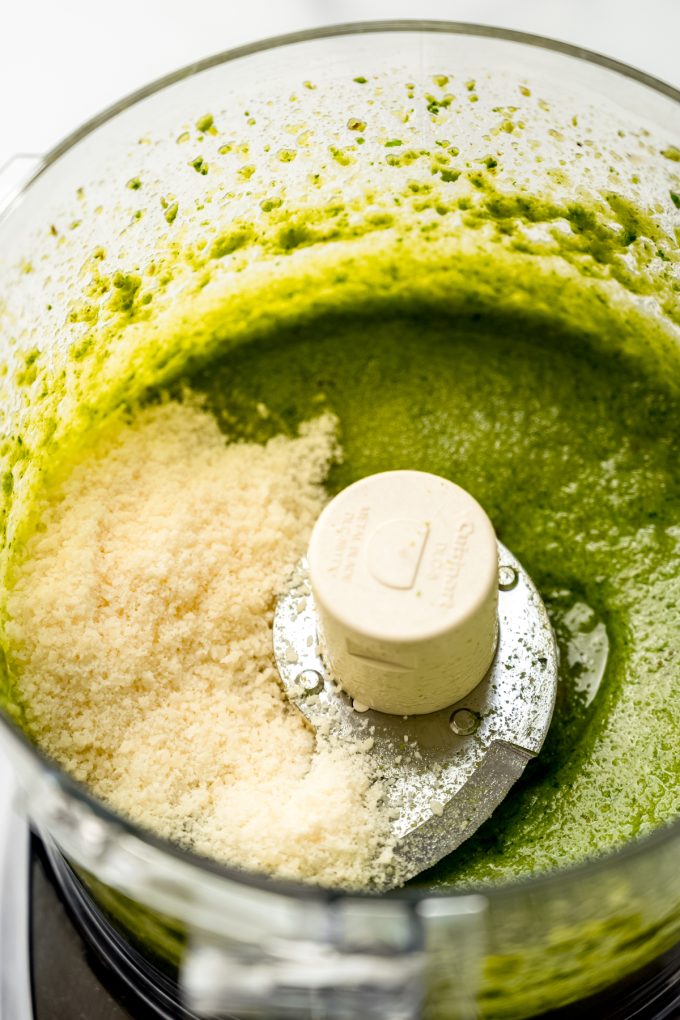
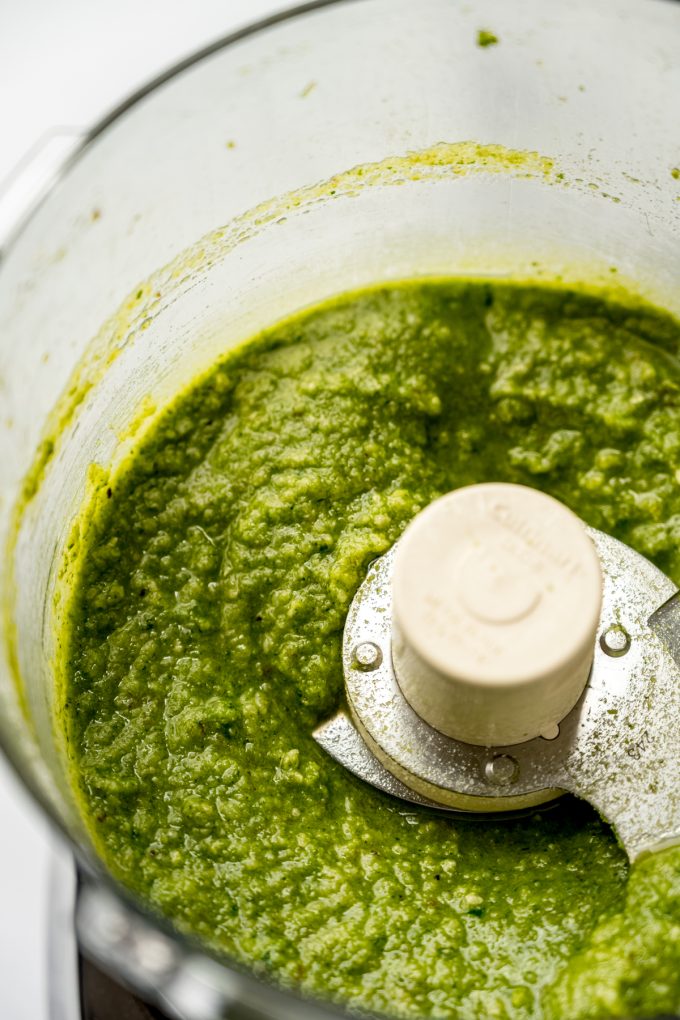
HOW TO USE HOMEMADE BASIL PESTO
If you’re not a regular pesto user, you may be wondering what to use it on. Lucky for you, I came with recommendations:
Make a pull-apart bread: this bread is one of my favorite recipes on my entire site. Whenever I make it, it’s gone in no time and I make any excuse to eat it!
Focaccia: spread some pesto on my caprese focaccia or use it to make a fancy pesto grilled cheese.
Pesto pasta: use pesto as a sauce over cooked pasta in place of a traditional tomato sauce.
Pizza: use your pesto in place of pizza sauce on pizza crust, tortilla pizza, or my sheet pan pizza.
Bruschetta: pair pesto with my strawberry goat cheese bruschetta for a super fun appetizer.
Sandwich spread: use pesto as a spread on literally any sandwich where you might use something like mayo. You might as well make your own sandwich bread while you’re at it.
Dip it: use it as a dip for homemade yeast rolls, pizza pull-apart bread, pizza dip, or my grandmother’s Parmesan parsley bread.
Topping: the uses are limitless when you start adding it to dishes! It goes well with fish, eggs, chicken, and vegetables.
How to store Fresh Basil Pesto
If you simply want to use up your basil and don’t have an immediate use for pesto, you’ll be happy to know it freezes really well. You’ll just want to make sure it’s covered tightly and/or pressed with plastic wrap because air is the enemy of pesto!
Similar to guacamole, it will darken as it oxidizes. It still tastes the same, but it just isn’t nearly as beautiful.
You could also freeze the fresh pesto in small amounts, in a greased ice cube tray, and then thaw the amount you need for a recipe when you need it, so you don’t have as much leftover to store in the fridge.
Now… Power up that processor and start spreading that pesto! You’ll be deliciously painting the town green in no time!
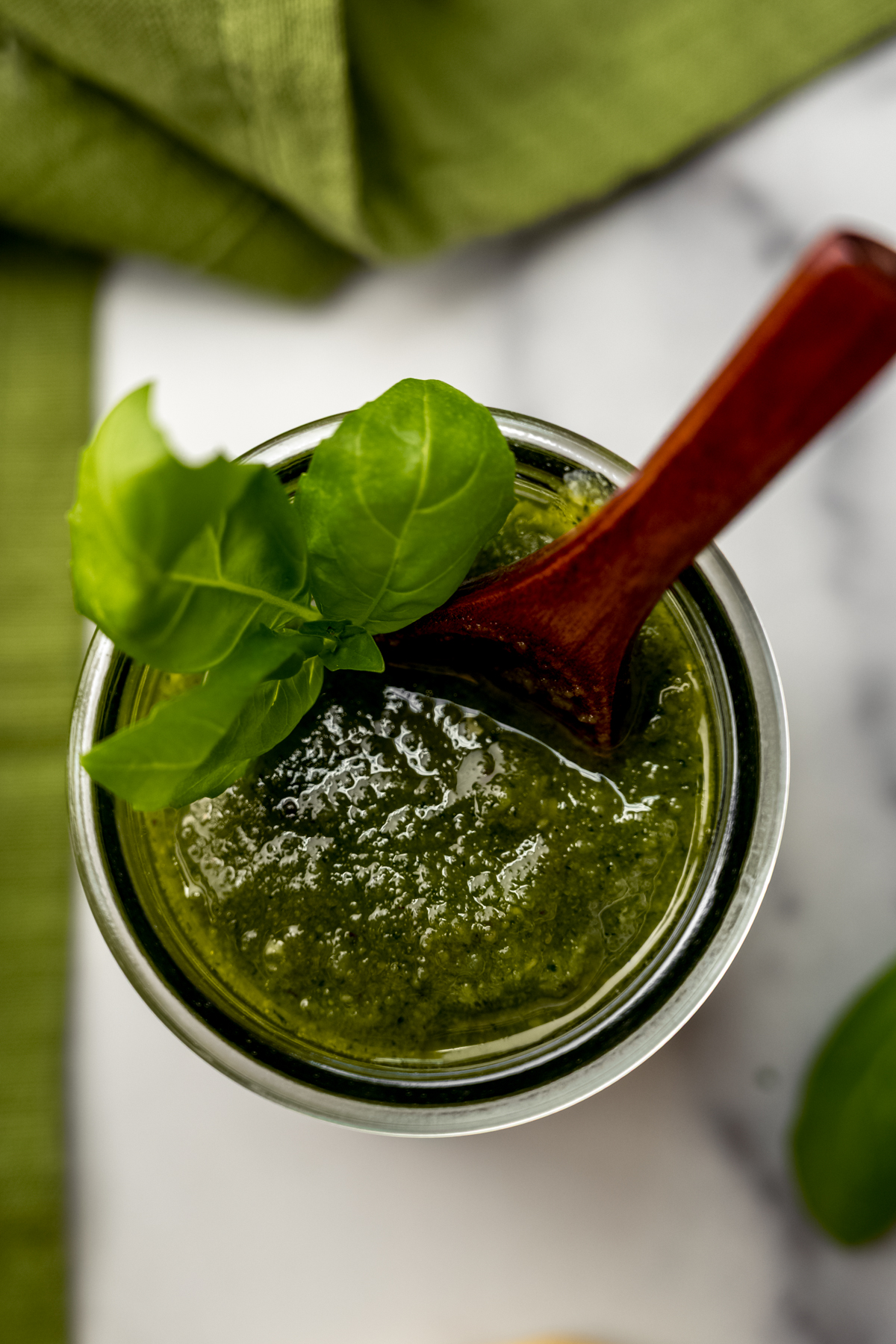
Basil Pesto Sauce FAQs
Fresh Basil Pesto Recipe
Ingredients
- 2 cups fresh basil leaves
- ½ cup (60g) pine nuts or walnuts
- 3 cloves garlic
- ½ cup (120mL) extra virgin olive oil
- ¼ teaspoon salt
- ⅓ cup (60g) grated Parmesan cheese1 optional
Instructions
- In the bowl of a food processor, combine the basil leaves, pine nuts or walnuts, and garlic. Process until everything is combined (it will still be chunky). Stop the processor, remove the lid, and scrape down the sides of the bowl.2 cups fresh basil leaves, ½ cup (60g) pine nuts or walnuts, 3 cloves garlic
- Replace the lid and remove the processor's plug in order to pour the olive oil directly into the mixture. Slowly drizzle in the olive oil and continue to process until all of the oil is incorporated.½ cup (120mL) extra virgin olive oil
- Stop the processor and add the salt and Parmesan cheese, if using. Pulse a few times to combine, then use pesto immediately. Pesto says fresh, covered tightly with plastic wrap pressed to the surface in the refrigerator up to 4 days. Pesto freezes very well. Wrap tightly with plastic wrap pressed to the surface, up to 3 months. Thaw in the refrigerator.¼ teaspoon salt, ⅓ cup (60g) grated Parmesan cheese1
Notes
- Parmesan cheese: this is a traditional ingredient in pesto, but omitting it will make this pesto vegan as well as dairy free.
- Use it in a recipe: make my pesto pull-apart bread with your fresh pesto!
Nutrition Disclosure
All nutritional values are approximate and provided to the reader as a courtesy. Changing ingredients and/or quantities will alter the estimated nutritional calculations.


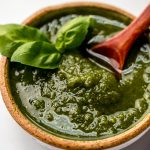
I absolutely adore pesto. Once you try it, there’s no turning back. Always craving it. I often have extra basil on hand, so I make homemade pesto on a regular basis. Nothing compares to the flavor of homemade. And I love the vibrant color of it. The recipe is soooo easy to follow. It takes only 7-10 minutes to make (or even less)! It’s always a life saver for those days when I don’t wanna spend time cooking. And it freezes really well. Gonna make it this weekend. Btw, Lynn how do you prefer to store it? Probably I missed that.
Yes! It’s SO simple. I just store it in the fridge or freezer, covered tightly.